 Technology peripherals
Technology peripherals
 AI
AI
 Interpretation from the Stanford HAI Institute: The 'Chip Act' spends US$280 billion, how much can the AI industry get?
Interpretation from the Stanford HAI Institute: The 'Chip Act' spends US$280 billion, how much can the AI industry get?
Interpretation from the Stanford HAI Institute: The 'Chip Act' spends US$280 billion, how much can the AI industry get?
Yesterday, the US$280 billion "Chip Bill" was officially signed, immediately triggering heated discussions. The capital market gave a strong negative response, and the stocks of major chip manufacturers fell sharply.
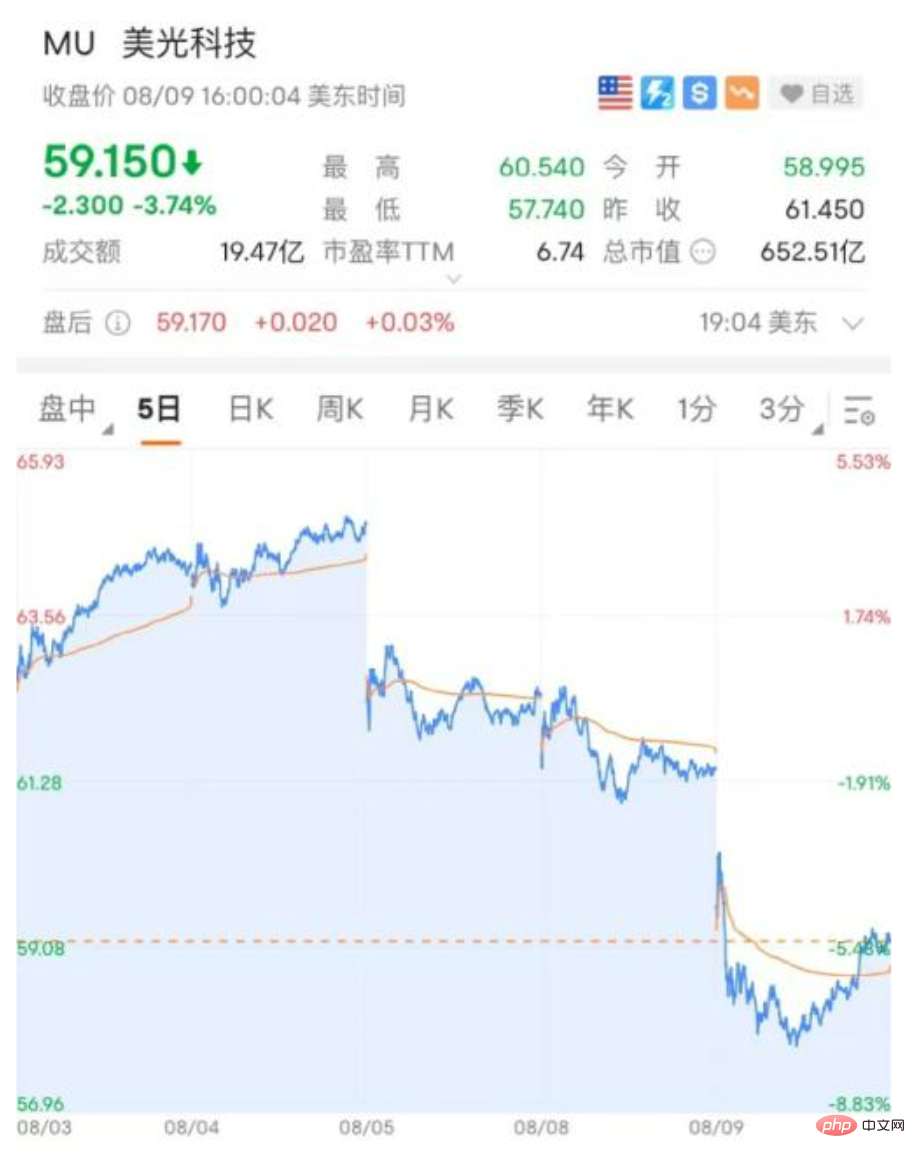
However, whether it is the media or the market, the focus is all on "chips", and they have probably ignored that the full name of this bill is "Chip and Science Act."
In fact, of the US$280 billion, the subsidies for "chips" totaled more than 54 billion, and the remaining more than 200 billion were all given to "science." Obviously, the latter is the big one.
Regarding the more than 54 billion yuan subsidized to the chip industry, a large number of articles have analyzed it thoroughly in recent days. So who took away the more than 200 billion yuan to support "research and innovation"?
According to the summary of the bill published by the House of Representatives Science Committee, it was mainly divided up by government departments and major large research funding agencies.
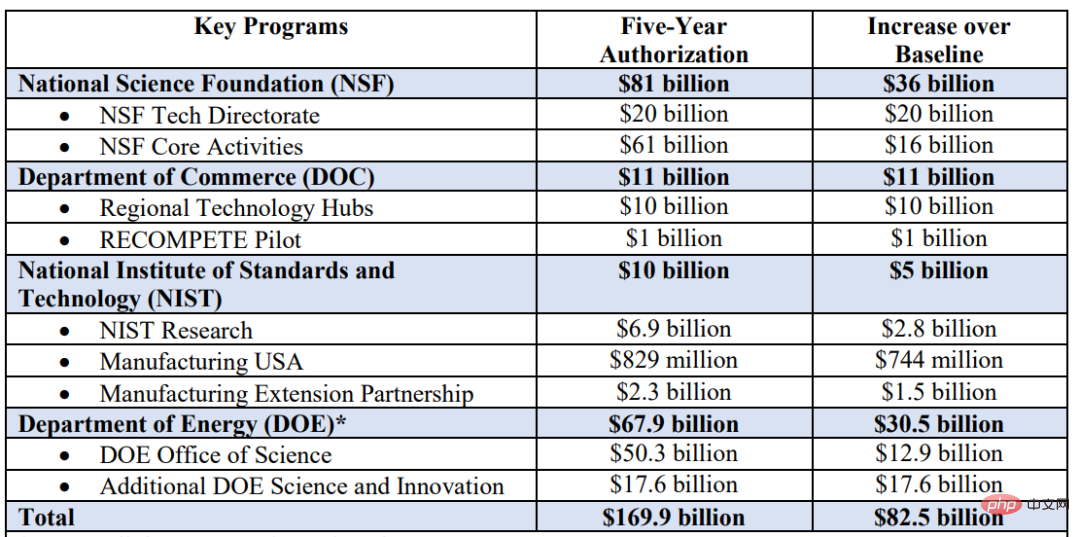
Mainly include the National Science Foundation (NSF), the National Institute of Standards and Technology (NIST), the Department of Energy, and the Department of Commerce.
Among them, the two companies that have received the most are NSF and the Department of Energy. In the next five years, they will receive at least US$81 billion and US$67.9 billion. This is just the basic budget. If additional additions are included, they can receive more respectively. Get more than 30 billion US dollars more.
In comparison, the budget of more than 54 billion US dollars in chip subsidies suddenly seems not that much.
With more than 200 billion US dollars, how much can the AI industry get?
As soon as the bill was enacted, the HAI Institute of Stanford University, which Li Feifei co-founded, analyzed the specific whereabouts of the money in the bill. Of course, their focus was not on chips, but on AI.
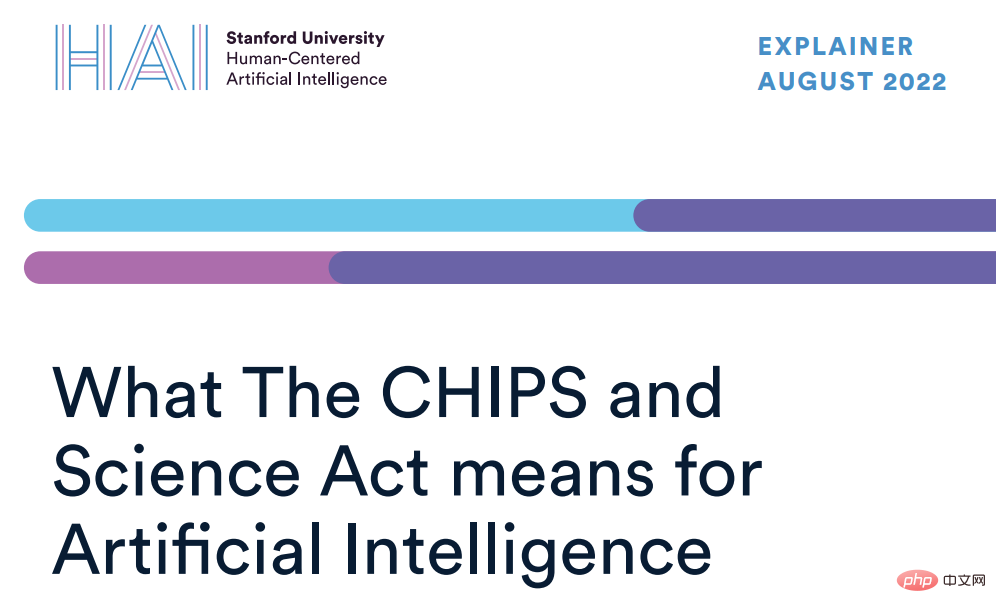
This article mainly analyzes the impact of the "Chip and Science Act" on AI. In terms of specific content, it is actually to see what money can be allocated to AI-related research and projects. .
HAI analysis believes that most of these investments are related to AI.
For example, investment in the semiconductor industry will provide impetus for the research and development of machine learning and artificial intelligence. Some investments are specifically targeted at AI, and AI-related funding projects are specifically listed in the bill. A table.
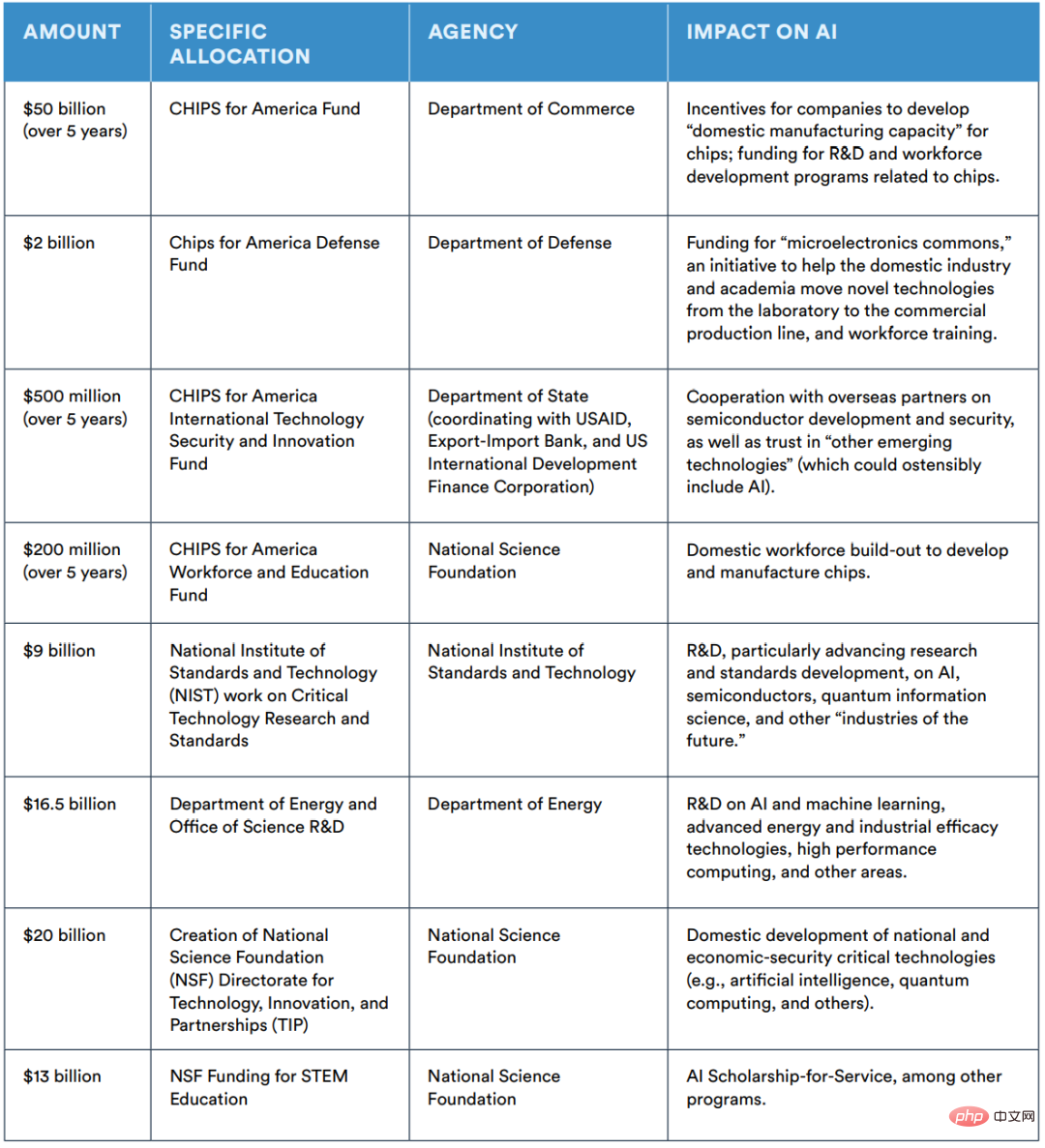
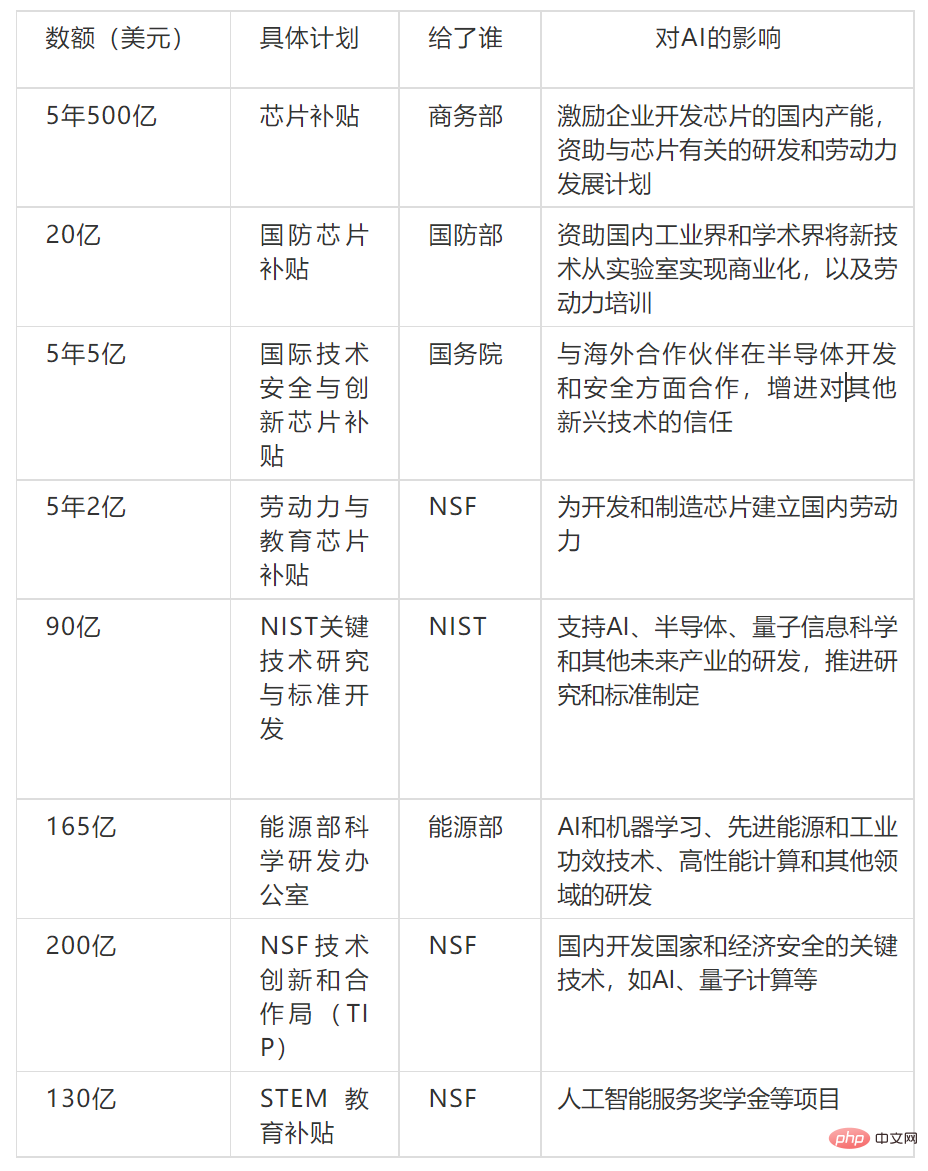
What terms are related to AI?
This chip bill has a lot of investment projects in AI. The main purpose is to expand existing plans related to artificial intelligence research and development and workforce development.
Section 10232 of the bill specifically addresses artificial intelligence, requiring the NIST director to "continue to support the development of artificial intelligence and data science and conduct activities under the National Artificial Intelligence Initiative Act of 2020," which is also 2021 Part of the National Defense Authorization Act 2021.

The specific contents of this Section 10232 include:
- Expand the capabilities of the institute, including scientific researchers and research infrastructure;
- Support measurement R&D systems for advanced computer chips and hardware designed for AI;
- Support the development of technical standards and guidelines that promote safe and trustworthy AI systems, such as improving accuracy in AI systems, Explainability, privacy, reliability, robustness, security;
- Create a framework for managing risks associated with artificial intelligence systems;
- Develop cybersecurity tools for artificial intelligence and data science , encryption methods and best practices;
The bill also amends the NIST Act to allow the director of NIST to work with other private sector and higher education institutions to establish a "virtual test bed" for "developing artificial intelligence and machine learning systems, including testing platforms that examine vulnerabilities and conditions that may lead to malfunctions, malfunctions, or attacks on such systems.”
In addition, there are other AI-related laws and regulations including:
- Section 10224: Directs NIST to establish an artificial intelligence defense research program;
- Section 10313: Authorizes NSF to create a federal AI scholarship program, similar to the CyberCorps scholarship (in which students receive scholarships to take Internet-related courses , and commits to provide government services for a period of time);
- Section 10360: Directs NSF to conduct public research on university artificial intelligence research capabilities, factors for research success, and geographic distribution;
- Section 10771: Authorizes grants for artificial intelligence and information technology from the Department of Energy’s Office of Environmental Management
Stanford HAI founded by Li Feifei
Let’s take a look at this again The analysis organization of this report is the Human-Centered AI Institute (HAI) of Stanford University.
The institution was established on March 18, 2019. Li Feifei, a giant in the AI industry, and John Etchemendy, former provost and professor of philosophy at Stanford University, jointly serve as deans of the institute.

HAI is composed of approximately 200 faculty members from seven schools at Stanford University, bringing together multidisciplinary researchers in computer science, neurobiology, economics, philosophy, etc. , and also hired industry experts such as former Google CEO Eric Schmidt as members of the advisory team.
is committed to the research, guidance and development of human-centered artificial intelligence technology and applications, and strengthens cooperation with industry (involving technology, financial services, health care and manufacturing, etc.), government and non-governmental organizations, through artificial intelligence Intelligence realizes a better future for mankind.
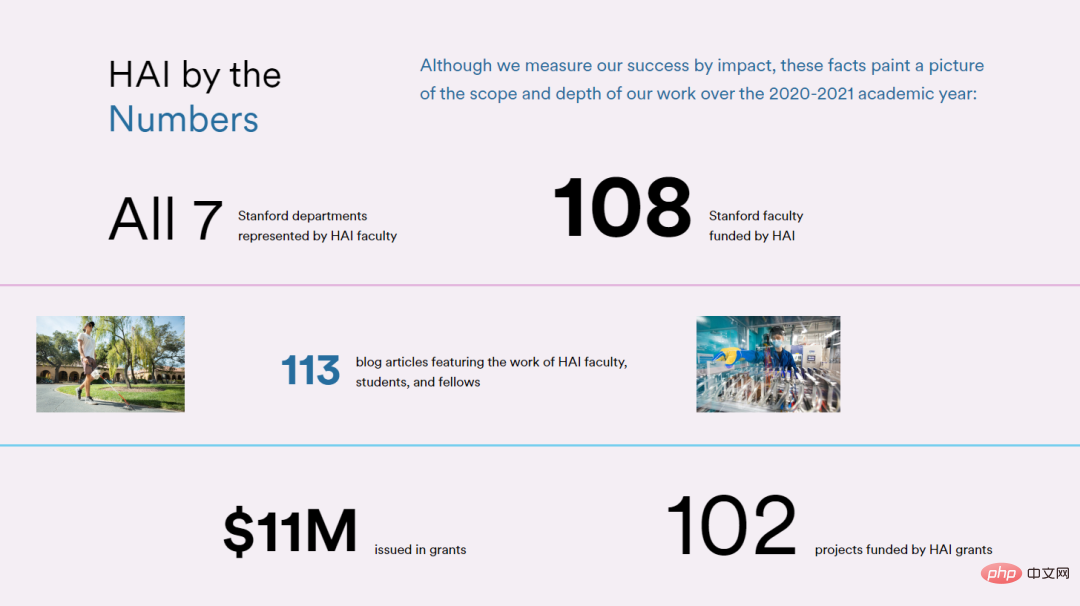
Stanford University President Marc Tessier Lavigne delivered a speech at the institute’s unveiling forum, saying that artificial intelligence has shown great potential in improving human life, but at the same time it also Bringing many potential risks, HAI was established to reduce the harm of artificial intelligence and better use artificial intelligence to improve the quality of human life.
Li Feifei said, "It is urgent to incorporate ethical research into the basis of artificial intelligence research and development."
HAI was born from three simple but powerful ideas: the development of artificial intelligence should be guided by its impact on human society; artificial intelligence should enhance human skills rather than replace humans; artificial intelligence should be more Incorporate more of the diversity, difference, and depth of human intelligence.
She said that HAI tries to achieve the following goals: make breakthroughs in interdisciplinary research collaboration; build a forum that broadly brings together global ideas; promote artificial intelligence education and popularization; influence policy and promote change.
The above is the detailed content of Interpretation from the Stanford HAI Institute: The 'Chip Act' spends US$280 billion, how much can the AI industry get?. For more information, please follow other related articles on the PHP Chinese website!

Hot AI Tools

Undress AI Tool
Undress images for free

Undresser.AI Undress
AI-powered app for creating realistic nude photos

AI Clothes Remover
Online AI tool for removing clothes from photos.

Clothoff.io
AI clothes remover

Video Face Swap
Swap faces in any video effortlessly with our completely free AI face swap tool!

Hot Article

Hot Tools

Notepad++7.3.1
Easy-to-use and free code editor

SublimeText3 Chinese version
Chinese version, very easy to use

Zend Studio 13.0.1
Powerful PHP integrated development environment

Dreamweaver CS6
Visual web development tools

SublimeText3 Mac version
God-level code editing software (SublimeText3)
 Cryptocurrency IDO platform top5
Aug 21, 2025 pm 07:33 PM
Cryptocurrency IDO platform top5
Aug 21, 2025 pm 07:33 PM
The best IDO platforms in 2025 are pump.fun, Bounce, Coin Terminal, Avalaunch and Gate Launchpad, which are suitable for Meme coin speculation, community-driven auctions, high-return pursuits, Avalanche ecological investment and fair participation of novices. The choice needs to combine investment goals, risk tolerance and project preferences, and focus on platform review and security.
 What is Polkadot (DOT currency)? Future development and price forecast of DOT
Aug 21, 2025 pm 07:30 PM
What is Polkadot (DOT currency)? Future development and price forecast of DOT
Aug 21, 2025 pm 07:30 PM
What is the directory DOT (Poker Coin)? The origin of Polkadot DOT (Polkadot) The operating principle of Polkadot has 5 major features, aiming to establish the Polkadot ecosystem (Ecosystem) 1. Interoperability 2. Scalability 3. Community Autonomy 4. No Fork Upgrade 5. NPOS Consensus Protocol Polkadot Key Features DOT Ecosystem Polkadot Vision: Connecting Everything Polkadot's Future Development Polkadot Price Forecast Polkadot 2025 Price Forecast Polkadot 2026-203
 What websites are there for cryptocurrency airdrop information aggregation?
Aug 21, 2025 pm 07:36 PM
What websites are there for cryptocurrency airdrop information aggregation?
Aug 21, 2025 pm 07:36 PM
Cryptocurrency airdrop information aggregation websites include Airdrop Alert, One Click Airdrop Tracker, Free Airdrop.io and CoinMarketCap airdrop sectors. These platforms integrate full-network airdrop projects and provide functions such as classification screening, task guidance and participation progress tracking to help users efficiently obtain free tokens.
 Have wlfi tokens been on the exchange
Aug 21, 2025 am 09:18 AM
Have wlfi tokens been on the exchange
Aug 21, 2025 am 09:18 AM
WLFI tokens have not yet been confirmed to be launched on mainstream centralized exchanges. Investors need to verify their listing status through official channels or platforms such as CoinMarketCap and CoinGecko. If they are not launched, they may only trade on decentralized exchanges (DEXs) such as Uniswap and PancakeSwap. Users can connect to DEXs through Web3 storage such as MetaMask and enter the contract address obtained by the official to trade. Pay attention to slippage tolerance and security risks when operating; whether WLFI can be launched on a centralized exchange in the future depends on factors such as project fundamentals, community activity, liquidity and compliance. Project parties need to actively connect with the exchange and meet the review requirements, while Binance, OKX, Huobi
 Ranking of mainstream Bitcoin trading apps, list of eight global users
Aug 21, 2025 am 08:54 AM
Ranking of mainstream Bitcoin trading apps, list of eight global users
Aug 21, 2025 am 08:54 AM
The crypto asset trading platform is a key hub connecting users and digital currencies. The article introduces mainstream global platforms such as Binance, OKX, gate.io, Huobi, KuCoin, Kraken, BITFINEX and Bitstamp. These platforms have performed outstandingly in terms of user volume, transaction volume, security, liquidity and service diversity, covering a variety of businesses such as spot, derivatives, DeFi, NFT, etc., meeting the needs of different users, and promoting the popularization and development of digital assets on a global scale.
 How much does a wlfie token cost
Aug 21, 2025 am 09:15 AM
How much does a wlfie token cost
Aug 21, 2025 am 09:15 AM
WLFI is a governance token for the LendFlare platform, built on Convex Finance to optimize revenue farming on Curve and Convex. Its price is affected by the overall market conditions of the crypto market, platform TVL, governance and pledge mechanism, supply and demand relationship and competitive environment. Investors can query real-time prices through platforms such as CoinGecko, CoinMarketCap or Uniswap, and then purchase USDT through mainstream exchanges such as Binance, OKX, and Huobi, and withdraw cash to a platform that supports WLFI transactions for redemption. Pay attention to network consistency and address accuracy during operation to avoid asset losses.
 The difference between fundamentals of cryptocurrencies and capital flows and how to choose
Aug 21, 2025 pm 07:39 PM
The difference between fundamentals of cryptocurrencies and capital flows and how to choose
Aug 21, 2025 pm 07:39 PM
Cryptocurrency investment needs to combine fundamentals and capital flows: long-term investors should pay attention to fundamental factors such as project technology and teams to evaluate intrinsic value, while short-term traders can rely on capital flow data such as trading volume and capital flow to grasp market opportunities. The two are used complementary and refer to authoritative data sources such as CoinMarketCap and Glassnode, which can more effectively reduce risks and improve decision-making quality.
 The top 10 recommended rankings of the most valuable virtual currency (2025 latest version)
Aug 22, 2025 pm 07:15 PM
The top 10 recommended rankings of the most valuable virtual currency (2025 latest version)
Aug 22, 2025 pm 07:15 PM
Bitcoin ranks first, followed by Ethereum, Solana, BNB, XRP, USDT, ADA, DOGE, SHIB, and AVAX, based on comprehensive rankings based on technology, ecology and market consensus.






